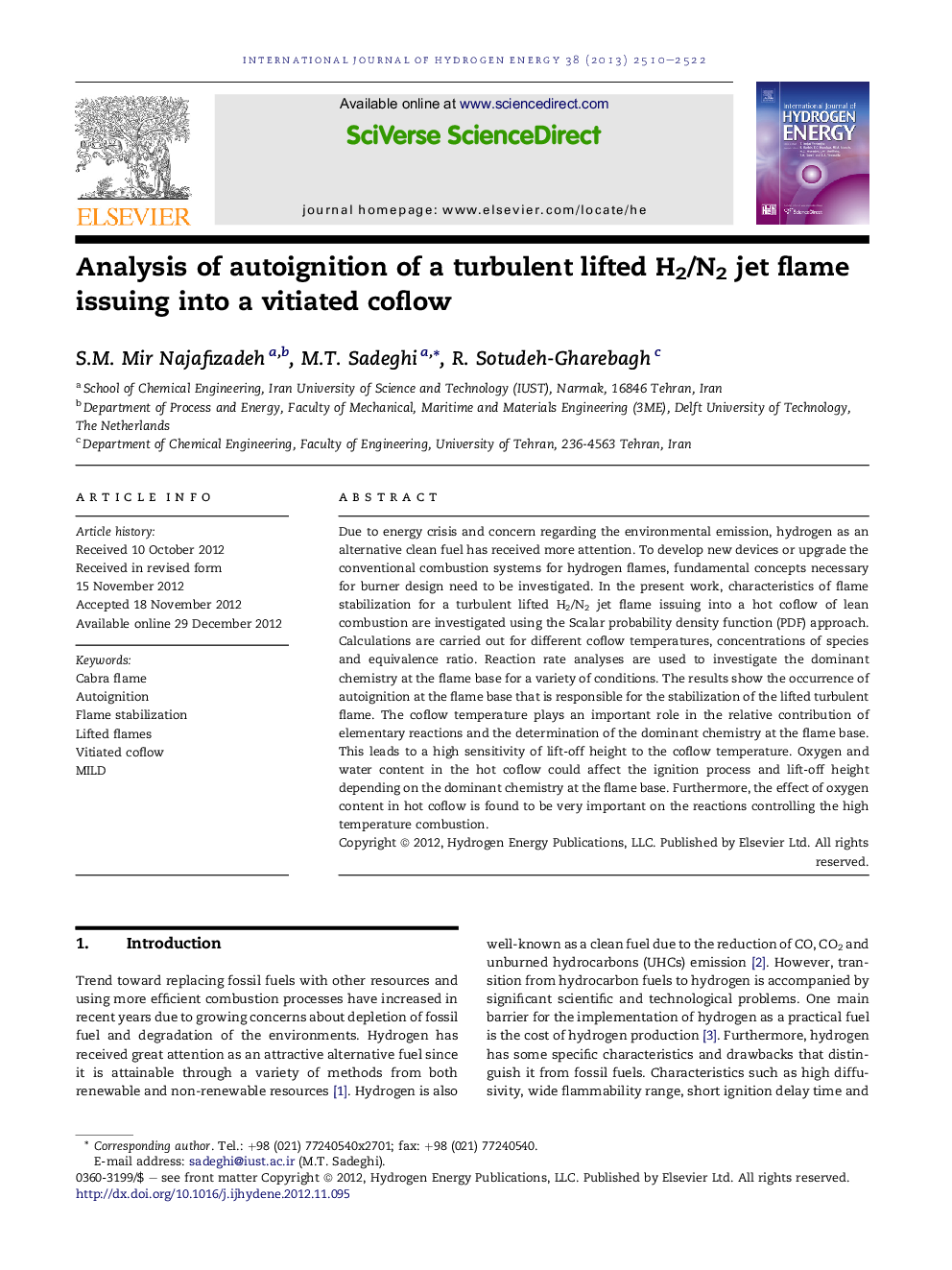| Article ID | Journal | Published Year | Pages | File Type |
|---|---|---|---|---|
| 1274117 | International Journal of Hydrogen Energy | 2013 | 13 Pages |
Due to energy crisis and concern regarding the environmental emission, hydrogen as an alternative clean fuel has received more attention. To develop new devices or upgrade the conventional combustion systems for hydrogen flames, fundamental concepts necessary for burner design need to be investigated. In the present work, characteristics of flame stabilization for a turbulent lifted H2/N2 jet flame issuing into a hot coflow of lean combustion are investigated using the Scalar probability density function (PDF) approach. Calculations are carried out for different coflow temperatures, concentrations of species and equivalence ratio. Reaction rate analyses are used to investigate the dominant chemistry at the flame base for a variety of conditions. The results show the occurrence of autoignition at the flame base that is responsible for the stabilization of the lifted turbulent flame. The coflow temperature plays an important role in the relative contribution of elementary reactions and the determination of the dominant chemistry at the flame base. This leads to a high sensitivity of lift-off height to the coflow temperature. Oxygen and water content in the hot coflow could affect the ignition process and lift-off height depending on the dominant chemistry at the flame base. Furthermore, the effect of oxygen content in hot coflow is found to be very important on the reactions controlling the high temperature combustion.
► Determining the dominant chemistry near the ignition point in lifted H2 flames. ► Importance of coflow temperature on the chemistry controlling flame stabilization. ► Impact of oxygen and water concentrations in the hot coflow on ignition process. ► Investigation of the effect of equivalence ratio on lift-off height.
